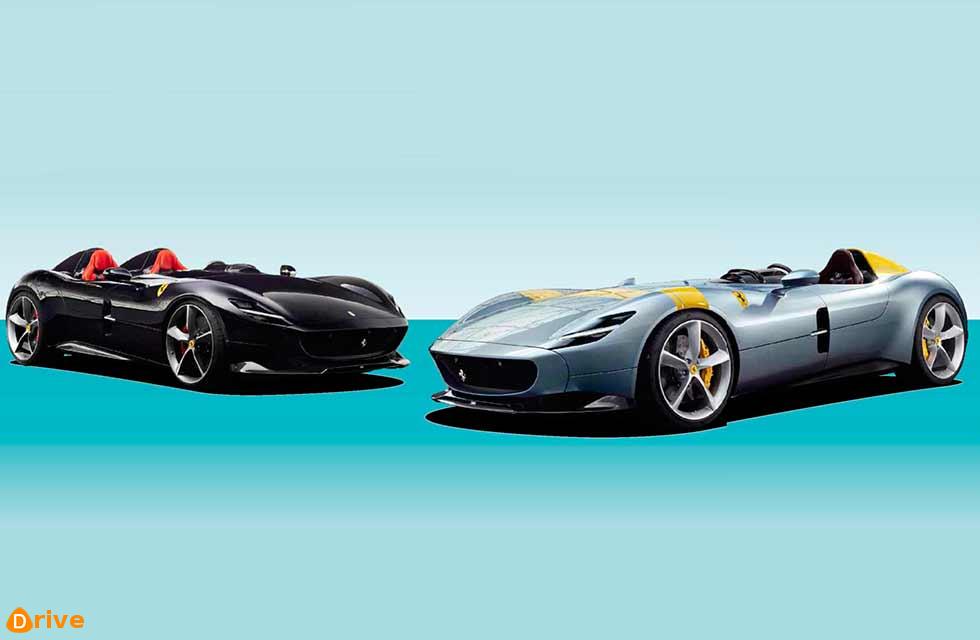Ferrari’s past helps shape its future. Maranello’s new four-year strategy includes hybrids and retro-inspired specials…
Ferrari Future Plans – by STUART GALLAGHER
Fifteen new models, of which 60 per cent will feature hybrid power trains; a new V6 engine and further development of its V12; a handful of hand-crafted specials; all of the existing line-up replaced and a couple of new GTs introduced; and not an SUV in sight – not a conventional one at least. Ferrari’s new four-year strategy is certainly a busy one – busy enough to keep customers and analysts happy.

Headline news from the Italian firm’s Capital Markets Day was that new CEO Louis Camilleri abhors the term SUV and the vehicles it represents. So Ferrari won’t be making one. Instead, the 71-year-old company will focus more on its past and investing in and growing its range of GT cars, which will include the ‘Purosange’. A four-seater Ferrari like no other Ferrari and like no other car, it’s an FUV, or Ferrari Utility Vehicle, not an SUV.
‘The Purosange will be unique in so many ways, and it will redefine expectations,’ said Camilleri. Currently in development, we won’t see the hybrid-powered Purosange until 2022, but before then Ferrari will have executed the majority of its strategy – a strategy, Camilleri was keen to point out, that he had inherited following Sergio Marchionne’s passing and just six days before it was to be signed off.
The strategy includes two mid-rear-engined cars, one a replacement for the 488, the other a model to sit above that to ultimately replace the 812. Both will have petrol-hybrid power trains with a minimum output of 400bhp per litre.
Ferrari sees its big gest growth area as the gran turismo sector. The next Portofino will be offered with both a V8 and a new V6 engine (which won’t be for a new Dino: it’s not in the product plan), with the GTC Lusso replacement retaining four-wheel drive and being touted a s the ‘return of the elegant Ferrari gran turismo’.
All future Ferrari GT cars will be front-mid-engined with a transaxle double-clutch gearbox that gives the option of rear or four-wheel drive. The cars will be built on a new platform with a wheelbase that can be adapted in length according to application, offering a variety of seating layouts from two-seater to full four-seater.
Ferrari has also just launched its exclusive Icona series, represented by the new Monza SP1 and SP2. Ferrari plans to build 500 Monza s at £2million a piece, though there’s no word yet on the model split. With styling inspired by the iconic Ferrari sports racers of the same name from the 1960s, the Monza is based on an adapted 812 Superfast platform, including its running gear, and clothed in an open-top carbonfibre body offering single- (SP1) or two-seater (SP2) configurations.
With a focus on providing the ‘closest F1 driving experience possible in a road car’, the Monza is just the beginning of Ferrari’s plans to reward its customers and special clients with low-volume models that celebrate its past successes in a very 21st century way.
Missing from the strategy is a LaFerrari replacement. A new hypercar is currently under development but won’t be launched this side of 2022. Taking into account that Aston Mar tin, AMG and McLaren plan to launch hypercars within the ne t five years, this is a very astute decision by Ferrari.
‘THEY’LL GIVE THE CLOSEST F1 DRIVING EXPERIENCE POSSIBLE IN A ROAD CAR’
Below: Monza SP1 has a single seat, the SP2 a pair of them, just 500 examples will be built in total, costing £2mllllon each.






